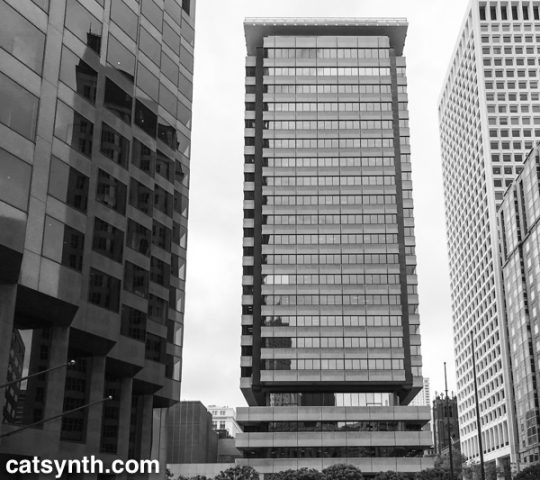
Plaza of 550 California Street, at Kearny Street, San Francisco.

Yesterday, countless people joined March for Our Lives in communities all across the United States and internationally. We at CatSynth attended our local rally and march here in San Francisco and created this video of the experience.
March for Our Lives is part of a larger movement protesting gun violence and gun safety, especially as it affects our youth. This has been bubbling for a long time, but it erupted in a full-fledged movement after the tragic shooting at Stoneman-Douglass High School in Parkland, Florida. The students who survived the shooting immediately spoke out forcefully against the seeming intransigence of leaders in the face of gun violence and have since been joined by countless other young people as well as those of us who are a bit older and support their message. It culminated in the events yesterday, where hundreds of thousands participated. There were a variety of opinions, from simple common-sense measures like banning specific devices and background checks to entirely abolishing the Second Amendment. But what united them is the idea that continuing to do nothing is unacceptable and must change. There was a modest success in Florida in the wake of the shooting, but it remains to be seen if more action comes from this.
We at CatSynth strongly believe that we need to do a lot more to reduce gun violence – and increase gun safety – in the U.S., and that cultural intransigence in some segments is no excuse. But we will save a detailed opinion for another time. For now, we leave you with the speech by Emma Gonzales, who with her fellow Parkland students have become the faces and consciences of this movement.
Today marks one year since Trump took office and one year of resistance to current regime (which seems like a more appropriate word than “administration” under the circumstances). To mark the occasion and kick off another year of resistance and civic/political engagement, we at CatSynth took part in the Women’s March.
Thousands gathered on a chilly but clear day in San Francisco’s Civic Center for a YUGE rally, before marching up Market Street towards The Embarcadero. Here are a few scenes, including a few of the many colorful signs.
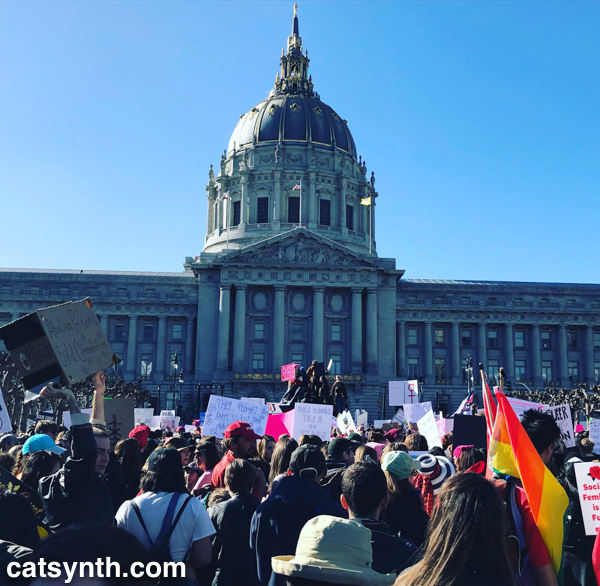

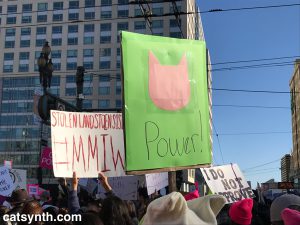
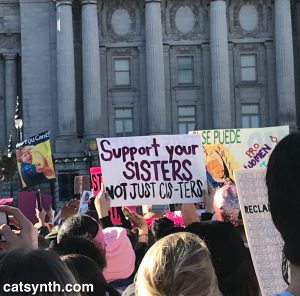

And here is our video documenting some moments from the event.
Marches like this of course just an initial step. The most important steps will be continued political engagement, especially but not limited to voting in a better set of leaders in 2018. We will see how things unfold.
Our first music report of the year features the final show we saw in 2017. Scott Amendola assembled a cast of seasoned improvisers for a concert at Slim’s in San Francisco that took us on quite a journey over two full-length sets. It was the subject of our last CatSynth TV.
As one can hear in the video, there were a variety of textures throughout the two sets. My favorites were the forceful rhythmic sections, some of which came at the very start of the performance. There were also quite a few “operatic” segments that featured the voice of Pamela Z, who was also manipulating samples through various electronic processes. Aurora Josephson’s vocals provided a counterpoint with different timbres and style.
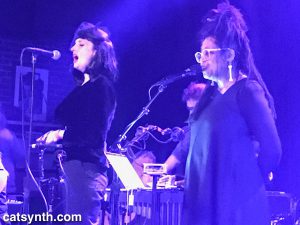
The ensemble includes three electric guitars (Henry Kaiser, John Schott, and Fred Frith) and three percussionists (Jordan Glenn, Robert Lopez, William Winant). As we have often remarked, doubling and tripling of such powerful instruments can be treacherous, especially in an improvised setting. But it worked here, as everyone had a distinct sound, and the good sense to always listen and lay out when appropriate. In fact, to my ears the music, especially during the more operatic less rhythmic sections, was dominated by the concert string section, consisting of Christina Stanley and Alisa Rose on violin, Crystal Pascucci on cello, Zach Ostroff on string bass, and Soo-Yeon Lyuh on haegeum. At various points, Mark Clifford cut through the harmonies and timbres on the ensemble with frenetic solos on vibraphone.
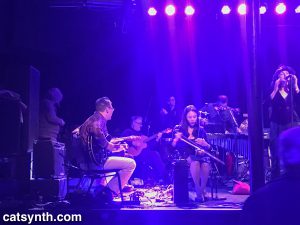
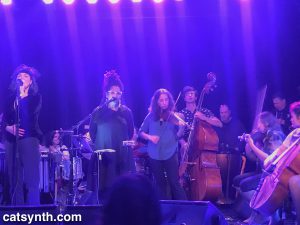
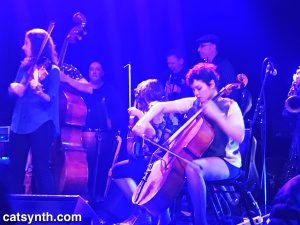
The ensemble was rounded out with the wind section, which included the entire Rova Saxophone Quartet: Bruce Ackley, Larry Ochs, Steve Adams, and Jon Raskin. I felt like I didn’t hear as much of a distinct voice from the saxophones as I did from the other sections, but that was perhaps because they blended with the violins and cello.
In all, it was a fine night of music to wrap up the year. As we often do at Slim’s, we enjoyed the concert from the balcony over dinner and drinks, but we also had the chance to mingle with our many friends in the ensemble and the audience. We look forward to more music from everyone in their own projects in 2018.